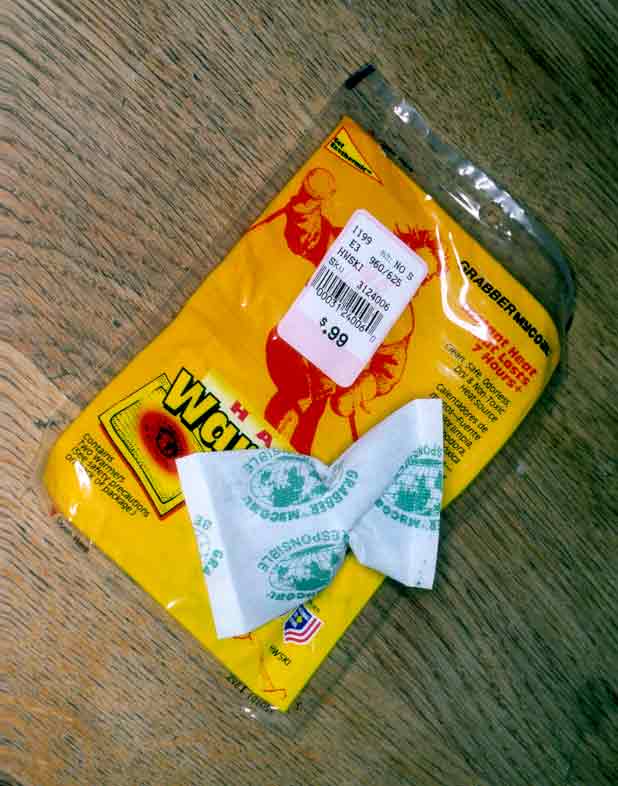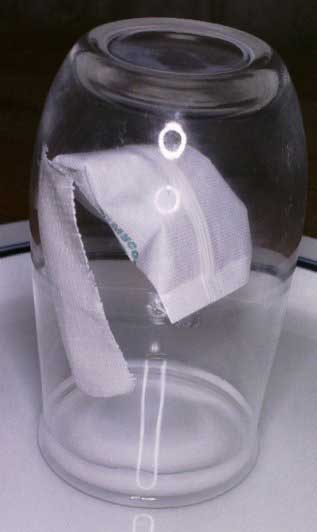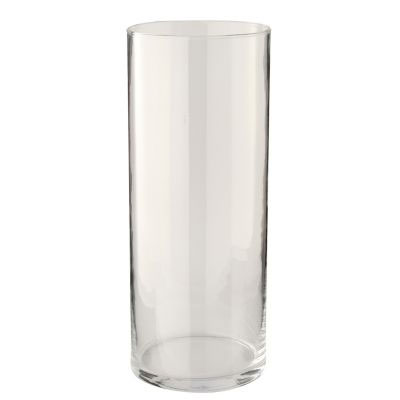How much oxygen is in air?
This is an experiment to measure how much oxygen is in the air. It's an easy one-evening experiment.
Created by Michael Peshkin, Northwestern University, 1998

The pouches have charcoal and iron powder in them. The iron reacts with oxygen in the air to make rust (iron oxide). This uses up all the oxygen. It also makes heat to keep your hands warm.



When all the oxygen is gone, the water stops rising. You can see how much the water level rose, as a fraction of the total amount of air originally in the glass. That's the fraction of the air that was oxygen.
It takes a few hours to finish using up the oxygen, but you can see the water rising after about 20 minutes.
What percentage of our air is oxygen?
Here's the most popular question: How do I tell from the water level how much of the air was oxygen?
Answer: Well, for instance, if the water rose 1/3 of the way up the glass, then 1/3 of the air in the glass was oxygen.
How much did the water rise in your glass?
Some people have written me that the "cylidrical"glass in my photos isn't very cylidrical! True; use the most straight-sided glass you can find, like that one -->.
Or, can you think of some way to get an accurate result for what fraction of the volume of air in the glass got used up, even if the glass is any odd shape?

Although very popular, this experiment is not valid.
They say the candle "uses up" the oxygen by burning. But actually, a candle produces the gas carbon dioxide (CO2) when burning, and CO2 takes up just as much space as the oxygen that went into it.
The water level rises, not because the oxygen is "used up", but because the heat from the candle expands the air and forces some of it to bubble out the bottom!
Later the air cools and contracts, and water replaces the air that bubbled out. But that amount has nothing to do with how much of the air was oxygen.
The hand-warmer experiment differs from the candle experiment, because when iron reacts with oxygen the resulting product (iron oxide, also called rust) is a solid, not a gas like CO2. The solid takes up almost no space. The water rises to replace the space that the oxygen took.

